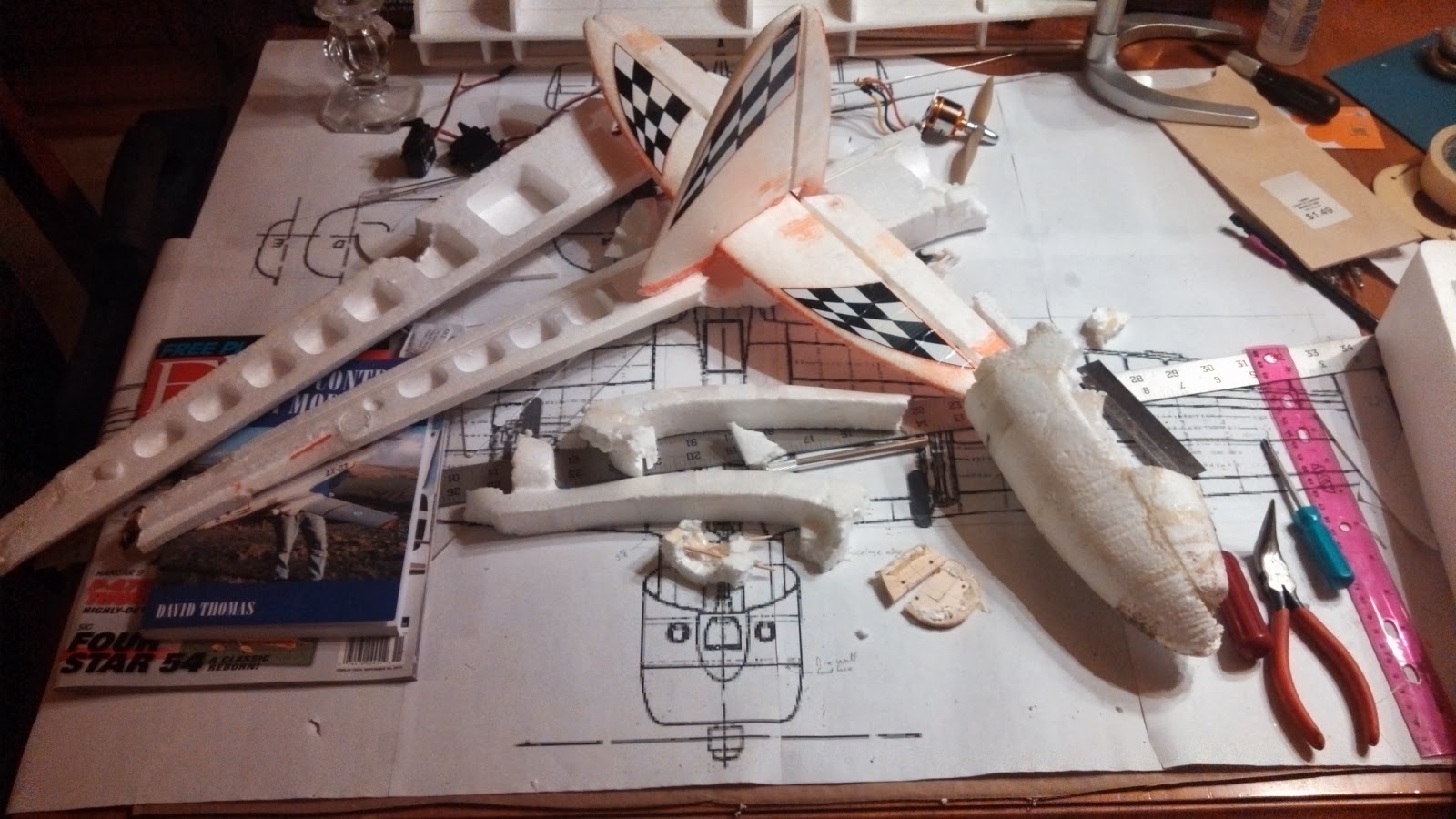Just as I was about to conclude my flying, I took one last flight down wind. The wind had picked up and I was finding it quite difficult to turn around. Then it happened. I was way down wind, struggling, and lost my orientation. The next thing I knew my Wild Hawk was heading quickly into the ground. I then saw pieces fly up into the air.
I recovered all the pieces that I could find and headed home to review the damage and watch the game. Needless to say, I will be performing another full rebuild of my Wild Hawk. The following are photos of the damage and reconstruction.
From this photo you kind of get an idea of the amount of damage. Fortunately the wing survived quite well!
This is back home on my table. I took all of the pieces apart as well as completely removed anything that was hanging together. I find it easier to re-glue whole pieces together rather than trying to work glue into cracks.
I took everything apart.
I do mean everything!
Again, I found it easier to reform pieces and fit them together by taking them completely apart. I even pulled out hot glue seams that I did not like and re-glued them.
This time I did not use hot glue, but my new favorite foam glue, Gorilla Glue. I really love this stuff! I get a nice strong joint that is light weight. Also, this glue has the added benefit of expanding to fill voids.
This time I did not use hot glue, but my new favorite foam glue, Gorilla Glue. I really love this stuff! I get a nice strong joint that is light weight. Also, this glue has the added benefit of expanding to fill voids.
I worked on keeping the pieces as straight as possible, making them into bigger pieces and then putting these bigger pieces together.
Here it's really coming together but I did decide to completely redo the motor mount and give it a more correct thrust angle. For a pusher, the thrust should be strait into the CG point.
More pieces of foam glued in place to fill in the gaps.
The final look of the motor mount. Also the nose is back on and some of the electronics as well.
I did later discover that this was just a little too steep of a thrust angle and ended up putting a few millimeter washers under the top motor mounts.
This all took a lot of patience as it does take a lot longer for Gorilla Glue to cure that hot glue and it took some time to take all the pieces apart and remove the old hot glue. But, it was all well worth it.
I don't know why I did not get any pictures of the completed plane, but it came together nicely and continues to be a fun plane to fly.
So, if you completely trash your Wild Hawk in a horrific crash, never fear. With some time and patience you can have it in the air again and have it flying better than ever.
Thanks for stopping by my blog. Please feel free to post comments, good or bad, and be sure to come back and check for future posts.














